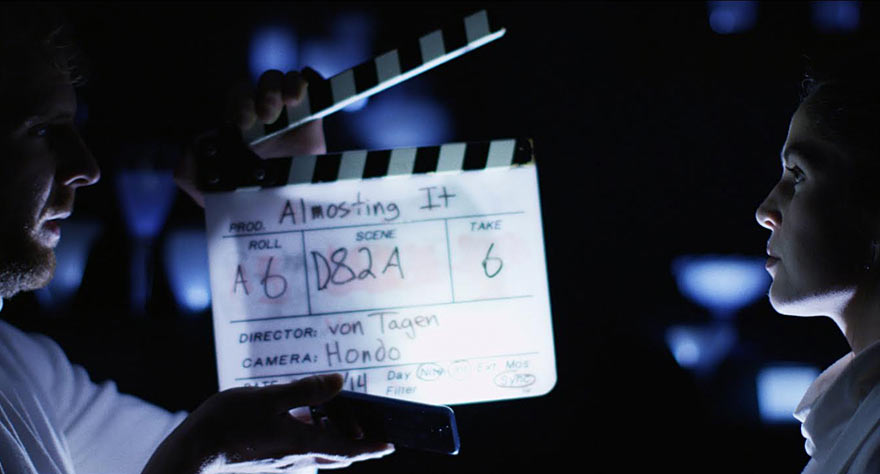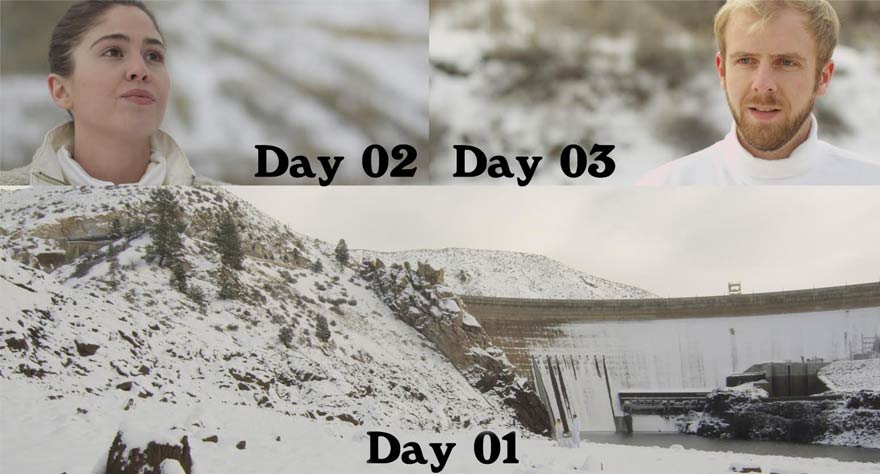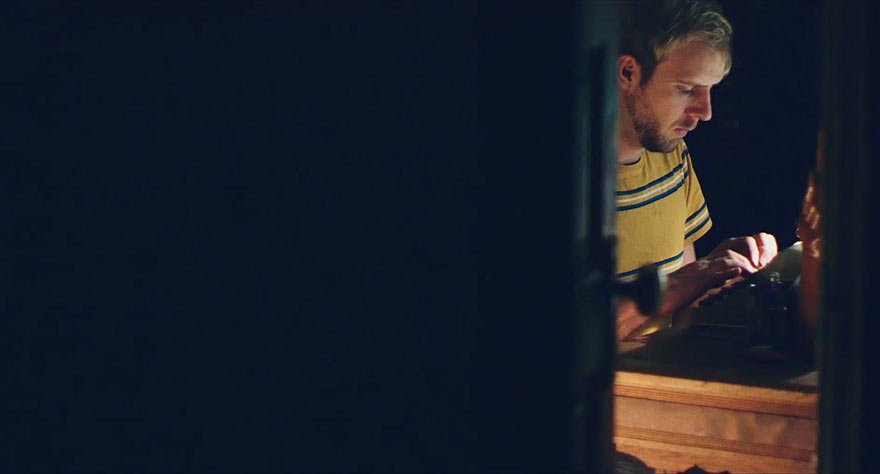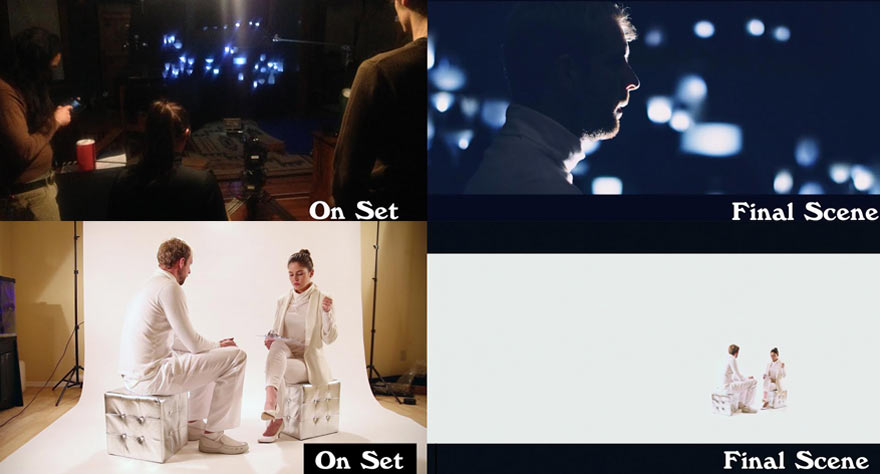Inside Indie Filmmaking: Shooting Pick-ups

In November of last year I flew to LA with a 92-minute first cut of Almosting It. I returned with a much tighter version, running at a solid but vastly insufficient 61 minutes. The narrative was still intact—that’s the effect a good editor can have on a project. We had tightened the pacing, trimmed the fat, enhanced a few performances, but came out well under a respectable run time for a feature film. I was instructed by my mentor to do one of two things: shoot 25 minutes of fluff, OR return to the earlier drafts of the script, find a plot line or two I had cut because I felt we wouldn’t have the time to film it, and write the scenes back into the story.
I decided to go for the latter, and prior to leaving LA for Boise I sat in a room on the studio lot for three days with my editor and new associate producer and re-outlined the film. One of the larger aspects of this was to take a character who was originally present for only one minute of screen time in the original cut and turn her into a supporting role. Another addition—which was also pulled from the original scripts—was to make the lead character, Ralph, more of a writing enthusiast. While doing this, the idea was brought up to film cut-aways, through which the audience visually experiences Ralph’s writing. Ralph being an aspiring sci-fi writer, this led to several ideas of scenes in other worldly environments.
I returned to Boise ready and determined. I wrote the added scenes in about two weeks, and hired a transcriber to re-adapt the shooting script to match the “November edits.” After writing the scenes, basic shot storyboards were drawn, photographed, and the dialog was recorded to accompany. Together, the boards and audio were inserted into the cut to see how everything flowed.
Pick-ups, as it turns out, are a very normal part of the filmmaking process. Most films require them. Some directors will shoot multiple endings; others require a few inserts, and some simply re-shoot scenes or grab additional coverage. I, however, decided to shoot an additional 20 minutes, which seemed daunting but doable until a few revelations came to light.
- There was next to no money. Really. In all, these remaining 20 minutes were shot on the equivalent of 1% of the films original budget.
- Nearly all of the new scenes had to fit around existing material shot in August. It was now mid December in Idaho. Temperatures were in the teens and snowfall was common.
- Crew contracts had expired. While I had flat rated everyone for the project, our production manager mistakenly had all terms set to expire in October. Most folks interpreted “pick-ups” as re-shoots, assumed the film was flawed, and decided to not be a part of the December shoots. While we had a crew of 40 in principle, we were lucky to pull 7 in December, with some scenes photographed with just myself and the talent, or completely alone (setting up my own shots, hiding the mic and delivering lines to a chair or bush).
- Our rental house was in the midst of a revamp, and there was no gear available.

I have always believed limitation incites creativity.
- The crew who returned were some of the hardest working and most dedicated individuals I could have hoped to surround myself with, including a few new faces.
- A production house with whom I had my first film internship decided to take 2 weeks off from shooting projects for the Christmas season, and agreed to let me use their gear, free of charge.
- We returned to previously established locations that were season-proof, such as our green house and retirement home. There were a couple of days where snow had melted and concrete dried. By framing out the dead trees, we were able to cheat our exteriors.We always had an issue expressing passage of time towards the end of the film. On days it DID snow, we used it to our advantage and now had a solid way of telling the audience that 6 months had passed without blatantly stating it via expository dialog. INSTANT production value. (We also used the snow for one of the “sci-fi” scenes.)
- The forced limitations on space and crew led to some of the more creative set designs, again yielding the successful creation of the surreal sci-fi scenes filmed around Ralph’s writing.
Here is where things got Way Too Indie, if you’ll pardon the name drop. Falling back on all of the tricks I used back on my earlier short films—which also carried no budget and crew—I was surprisingly comfortable with what I had to work with. Granted, the comfort of a full crew and extra dollars would have been great, but after accepting what we had, we navigated the pick-ups with surprising grace.
Best of all: what we walked away with—the additional 20 minutes—ended up being the best stuff in the film, and fit seamlessly with the scenes shot during principle 4 months earlier.
Not without frustrations, I do have a story or two about some of the craziness we endured. One of the sci-fi scenes (yes, these three scenes probably carry the most stories) was written to take advantage of the snow-filled, rocky reservoir that was drained each winter above Boise. The ground at the base of the dam is fully exposed and extremely eerie this time of year. This is also a sight rarely seen, let alone photographed in Idaho. At elevation and on the second to last day of December, the outside temperature was 12 degrees in the sunshine. We filmed in the shade.

To preserve the surrounding snow, building the set required hiking a ways out around the site, fatiguing the small five-man crew. Annie, our 5’3” little actress was feeling the cold especially bad, and with the cars a quarter-mile away, she was forced to endure. We were able to get one take on our master set-up before the camera locked up in the cold and stopped working. But that one master take was all we needed.
The following day, Annie and I went to a nearby park. The snow-covered hillside was just rocky enough to work, and by keeping a very shallow depth of field, we were actually able to shoot her coverage of the scene and have it fit in seamlessly with the master. My coverage was less convincing, especially since my eye line was horribly off and the sunlight was beginning to change. I went out once more, this time alone. Beside another hill on the side of the road I got the coverage I needed (as much as the occasional traffic tried to impede). So in all, the scene is shot on three different days in three separate locations and varying crew sizes. But everything cuts together perfectly, and it is a scene I am very proud of.
Other cheated shots included a vast infinity room—ala THX 1138—in which we used a simple photo-studio backdrop, blasted the highlights, and cropped the shot onto a white matte in our basic editing program.
Turning to an old Hitchcock trick, we used glasses of milk, waterproof LED bulbs, and a trick of exposure to transform my parent’s living room into a dark, haunting, futuristic void for another scene.

Then there were easier gets, such as the green house and an independent bookstore.
Having already gone through such an extensive picture edit—and learning what I did—I felt I had a much better grasp on the filming process during these pick-ups, saving us time and headache while also “cutting the fat” in the writing as opposed to in the edit.
There were some obvious headaches, such as the struggle to match hair and wardrobe continuity. Though our Hair/Make-up and Art Department Heads did a terrific job photographing all the various set-ups for each scene. I still am not as good at doing my own hair as Lana our Make-Up head.
The house I lived in at the time—where Ralph lives in the film—was also in the early stages of a remodel as my roommates prepped the place to sell in early spring.
Needless to say, we navigated through all of the obstacles. It all falls back to what I have relayed in previous articles: flexibility is key, and your ability to roll with the punches and think on your feet will save you in a pinch. We all have something to be very proud of. With the micro crew, limited resources and truly no budget. We brought a lot of new depth and high production value to what was an already very well-shot and produced film.
Everything we added carries a lot of weight. Had I not worked with such a skilled editor, we never would have trimmed the piece to a point that these very necessary pick-ups could have been added. It is a very bizarre yet engrossing chain of events that brings you to this point, but the more I speak with seasoned filmmakers, the more I see this is a normal part of filmmaking. Granted, it would have been wise to have known this ahead of time and budgeted so to avoid the chaos (and certainly 20 minutes of new material isn’t entirely normal), but it was the right decision for the film.
At the end of the day, you learn a lot making a film, particularly your first feature. You walk into it not even knowing what you don’t know, and leave feeling worn and beaten, but alive and educated. For Almosting It—a title that now carries an added meaning after the process of making it—I have very few regrets. It has really been the perfect first-feature experience. I had the chance to work with a wide variety of actors, crew, equipment and resources, some limiting, others limitless. I learned a great deal about myself, about others, and about the overall process of making a movie, the stuff you can’t read or learn about on YouTube.
I am writing this article exactly 3 weeks before our premiere date. I would be lying if I didn’t say I was very nervous about the upcoming release. By the time the film hits the screen for the first time, over 18 months of my life will have been spent working solely on this movie. A lot has happened, both to me and to the project itself. The premiere will be a very exposing and revealing moment, and 2 days following the premiere, the film will be on another 10 screens around the state before expanding even further.
Next week: I’ll talk about the process of getting it from the edit timeline of the computer to the projection booth of a theater. Anyone can make a movie, but selling it proves to be another obstacle all together, one I saw coming, but never assumed I would be tacking alone.
